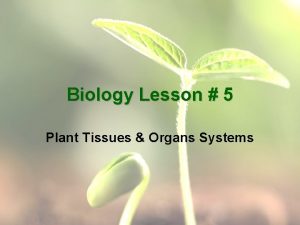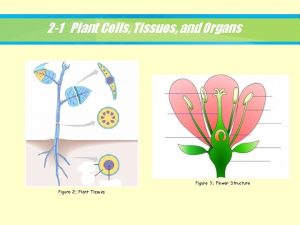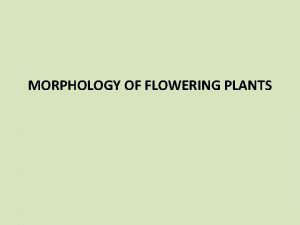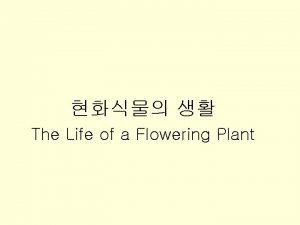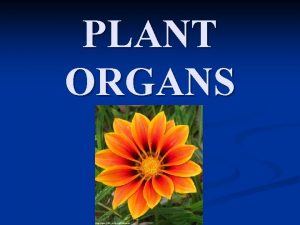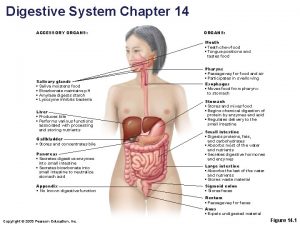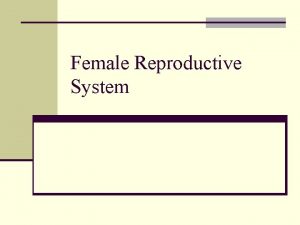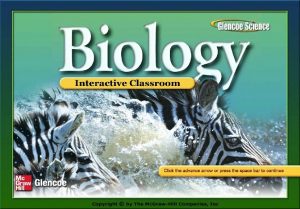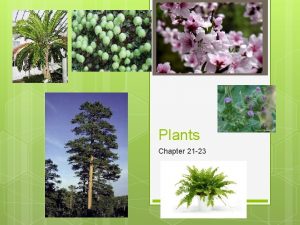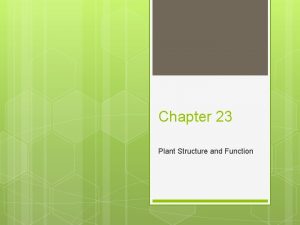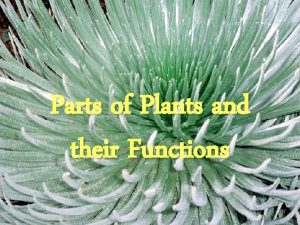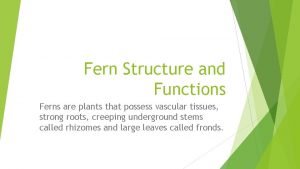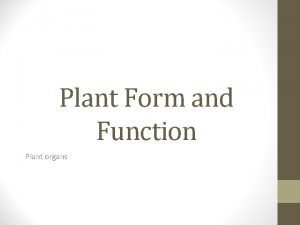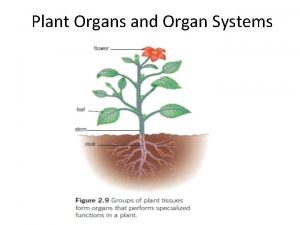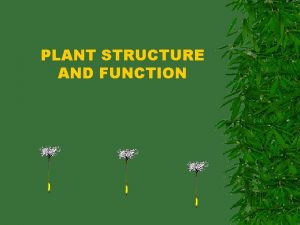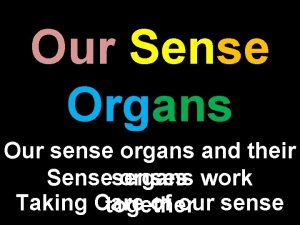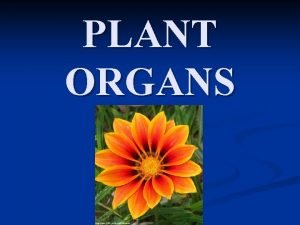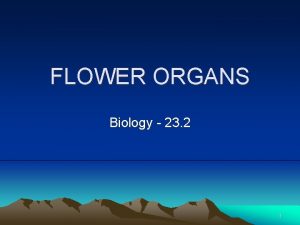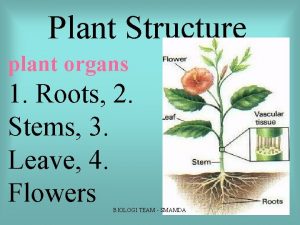Plant Organs and their Structure Function Structure PLANT

















- Slides: 17

Plant Organs and their Structure & Function

Structure

PLANT CIRCULATION AND RESPIRATION Water and dissolved minerals enter a plant's roots from the soil by means of diffusion and osmosis. These substances then travel upward in the plant in xylem vessels. Transpiration creates a pull from above, as lost water molecules are replaced with new ones

STRUCTURES Water is lost through stomata. Stomata are small openings in the leaf. Stomata have guard cells, which open and close to let water and gases through.

• Carbohydrates, produced in leaves by photosynthesis, travel downward in plants in specialized tissue called PHLOEM. • Water pressure forces these substances from cell to cell, back down to the rest of the plant • Circulatory System - Circulation In Vascular Plants - Water, Travel, Phloem, Cell, and Substances http: //science. jrank. org/pages/1497/Circulatory-System-Circulation-in-vascular-plants. html#ixzz 1723 typ 89

Plant Tissues • Meristematic Tissue – Function: division of new cells for growth or repair – Form: 1. Apical meristems are located at root and shoot tips and are directly involved in their elongation --plants protect their meristems with young leaves, buds, and root caps

Plant Tissues… Meristermatic 2. Lateral meristem are responsible for horizontal expansion 3. Intercalary meristem helps regenerate parts removed by lawnmowers, herbivores, etc

Plant Tissues • Ground Tissue – Function: bulk of plant tissue; store starch, photosynthesis and respiration, physical support – Form: 1. Parenchyma Large spherical cells for storage and cell processes

Plant Tissues • Ground Tissue – Form cont’d: 2. Collenchyma Elongated, flexible cells just beneath surface to support growth 3. Sclerenchyma Thick, nonflexible dead cells form shells of nuts and grittiness of pears Structural support

Plant Tissues • Dermal Tissue – Function: protection from dehydration and bacteria, nutrient absorption – Form: single layer of cells 1. Root Hairs—increase surface area for absorbing water

Plant Tissues - Dermal 2. Leaf Hairs (Trichomes) Reflects light, breaks wind currents, traps humidity, barbs to deter insects 3. Stomata underneath leaves allow CO 2 in and H 20 out 4. Salt glands removes excess salt

Plant Tissues • Vascular Tissue – Function: movement of fluids/food and physical support – Form: 1. Xylem dead, hollow cells; have a large diameter, so water movement through them is rapid

Plant Tissues - Vascular 2. Phloem tube cells with pores at ends transports dissolved sugars from leaves to rest of plant



Plant Reproduction: Flowers

Questions about Plant Reproduction • What is the role of the petals in reproduction? – Protects reproductive parts of flower – Attracts Pollenators • What is the purpose of fruit that develops in flowering plants? – It is the ovary of the plant. Provides nutrients and protects seeds.
 Ground tissue system
Ground tissue system Plant tissue and organs
Plant tissue and organs Change of gases
Change of gases Parts of plant
Parts of plant Plant organs
Plant organs In some plants like grass monstera
In some plants like grass monstera Plant organs
Plant organs Four organs of a plant
Four organs of a plant Major and accessory organs of the digestive system
Major and accessory organs of the digestive system Main function of major organs
Main function of major organs Oviduct funnel
Oviduct funnel Produces a lubricating mucus that cleanses the urethra
Produces a lubricating mucus that cleanses the urethra Plant and animal cell
Plant and animal cell Chapter 22 plant structure and function answer key
Chapter 22 plant structure and function answer key Chapter 21 plant structure and function
Chapter 21 plant structure and function Section 23-4 leaves
Section 23-4 leaves Plants parts and functions
Plants parts and functions Ferns structure
Ferns structure

